This Corona year gave me – and millions of others – the opportunity to spend time exploring my own region – England’s southwest. As a travel writer, I’m normally away such a lot that finding two or more spare weeks is difficult, so my long-held ambition to walk Devon’s Coast to Coast trail and The Coleridge Way were endlessly postponed. But after completing the Hadrian Wall long-distance trail last summer with an 80-year-old friend, and the West Highland Way a few years before, I knew the appeal of a continuous A to B walk, and recognised that, as I move into my 80th year myself, if I didn’t do it this year I probably never would.
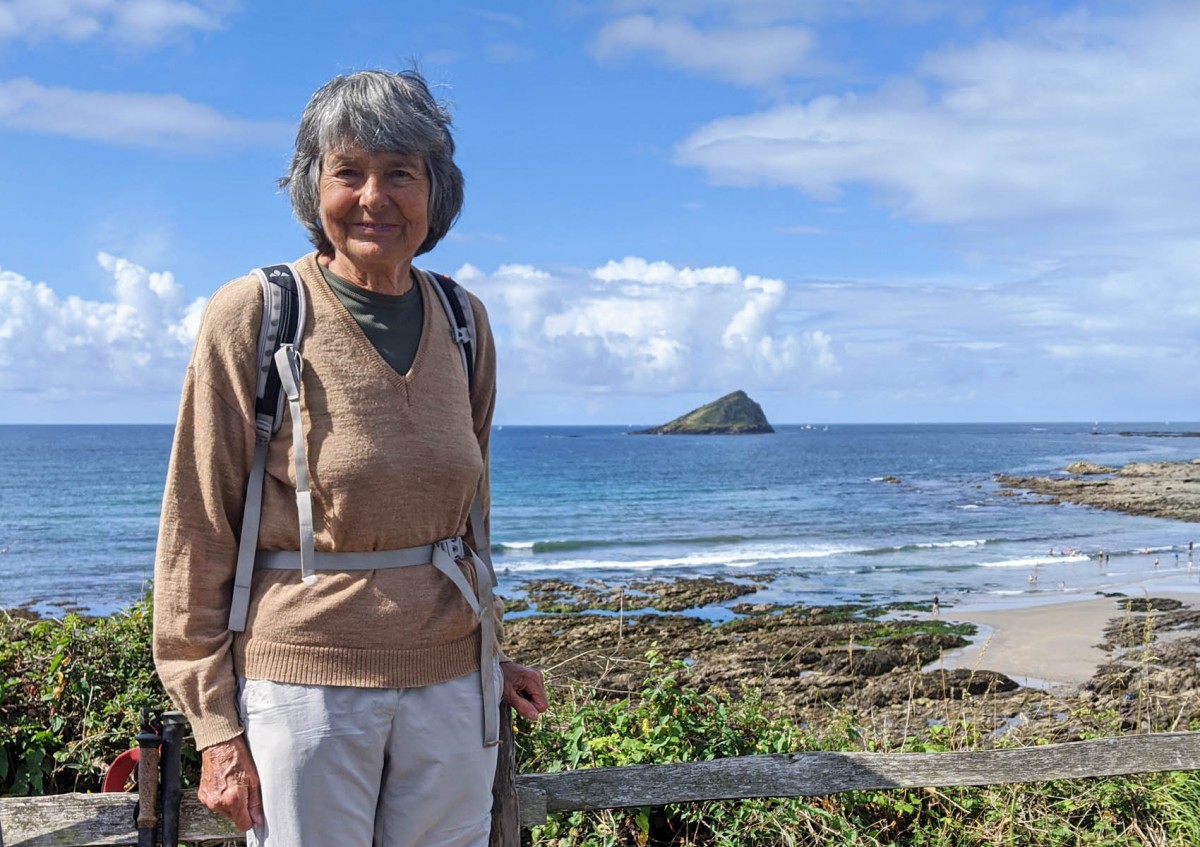
Day 1 Wembury
Our glorious lock-down spring – when every day was full of sunshine, the roads were empty, and people greeted each other (even as they crossed the road in avoidance) – was the perfect opportunity to get walking fit and plan the 117-mile Coast to Coast. It had to be in August since that was the earliest that self-catering places were allowed to take guests. None of my walking friends were able to join me for the whole trip so I organised three lots of companions, and their dogs, to accompany me for three or four days at a time. We chose self-catering accommodation over B&Bs – see below for the advantages and disadvantages.
My walk took two weeks, with the longest day a tough 13 miles and the shortest, on the first day, six miles. And it was absolutely wonderful! This is a stunningly beautiful and interesting walk, which was only recently extended to Devon’s south coast to make it a satisfying route across the entire county. The Two Moors Way can still be done from Ivybridge at the southern end of Dartmoor to Lynmouth in Exmoor. By starting in Wembury, near Plymouth, it added another two days but a greater feeling of accomplishment. What I loved was the contrast. Every day was different. The first couple of days were along easy paths through woodland and across farmers’ fields, then we had the long day across roadless Dartmoor. It’s bleak! But it’s the only time you can be on England’s largest expanse of true wilderness and feel utterly alone. No signs or houses, no sound of cars, and very little colour. The heather and gorse that brightened our route on subsequent days are absent on this stretch between Ivybridge and Scorriton.
We plunged into river valleys and shady woods, and gasped at the drama of the gorge below
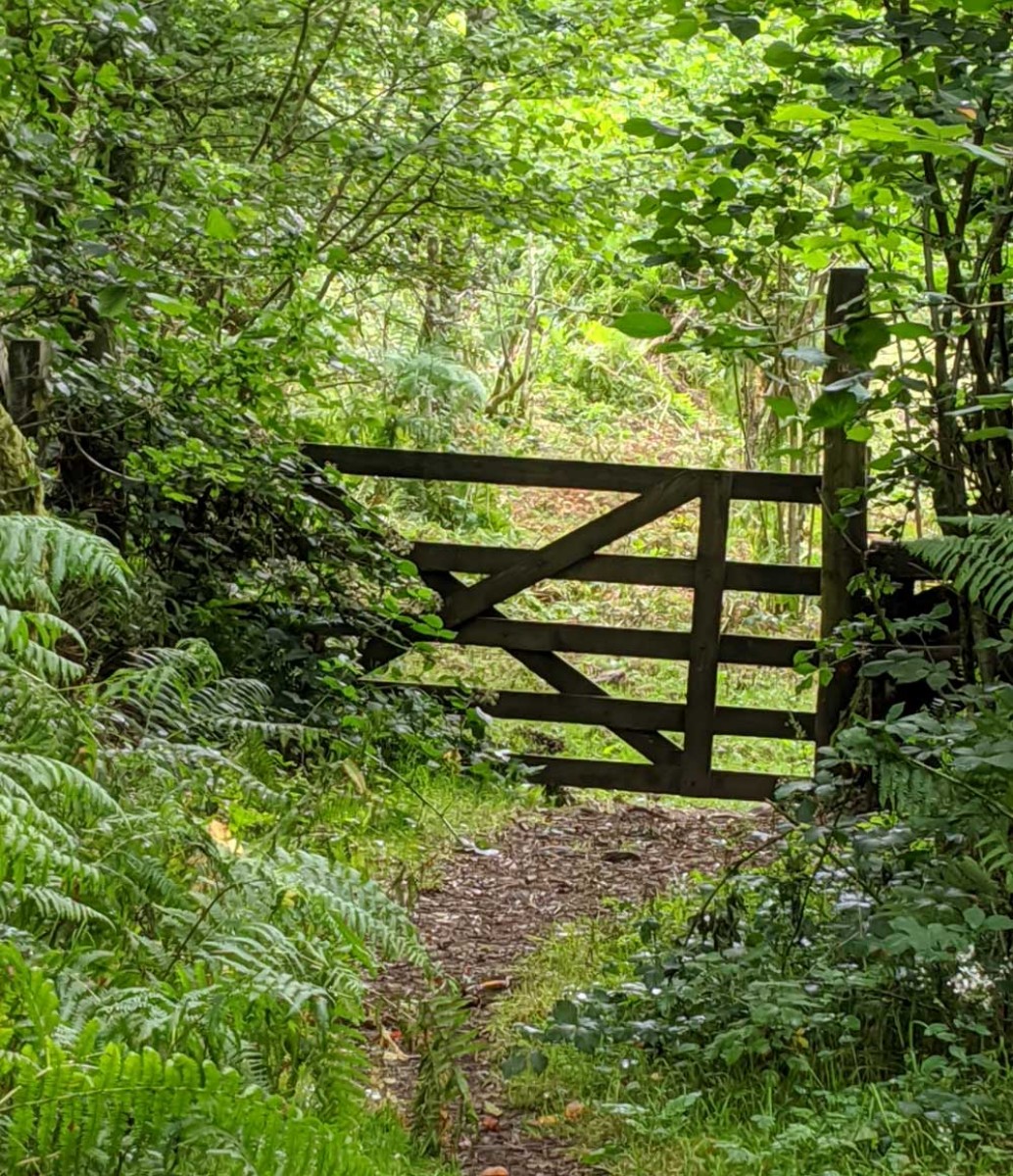
Valley views
After that it got progressively easier. No other day was so long, nor so bleak. Northern Dartmoor was a bright tapestry of yellow and purple from flowering gorse and heather, we plunged into river valleys and shady woods, and gasped at the drama of the gorge below Castle Drogo, surely one of Dartmoor’s most stunning views. After four days of Dartmoor we entered mid Devon, a little-known area of farming communities and almost no other walkers. In the middle of nowhere, climbing up a huge field, we came to an astonishing sight. A huge metal sculpture of a man sinking into the earth. You could almost hear his yells as his hands clawed at the air. It would have been wonderful anywhere, but to come across it unexpectedly in such a remote area was an absolute treat.

Impressive sculpture in Mid Devon
The weather broke for our last day and we walked from Simonsbath through Exmoor’s most empty moorland. Like southern Dartmoor, this comprised a beige-coloured landscape of tussock grass. Whilst in Dartmoor there were tracks and paths to follow, this part of Exmoor was pathless and to make matters more challenging, the mist came down. Without a compass we would have been in serious trouble, but by studying the map and keeping a direct course northwest we reached the bridlepath that eventually took us to Watersmeet for a well-deserved tea and on to Lynmouth, the end of the walk, where we celebrated with a bottle of champagne. Photos taken, praises sung, and I told myself I was the most marvellous septuagenarian in Devon. I was also a lot fitter than when I started; ten miles no longer seemed an impossible daily distance and I finished with a flourish with 12 miles and still had the energy to walk up to my favourite hotel, Highcliffe House, for a bit of pampering.
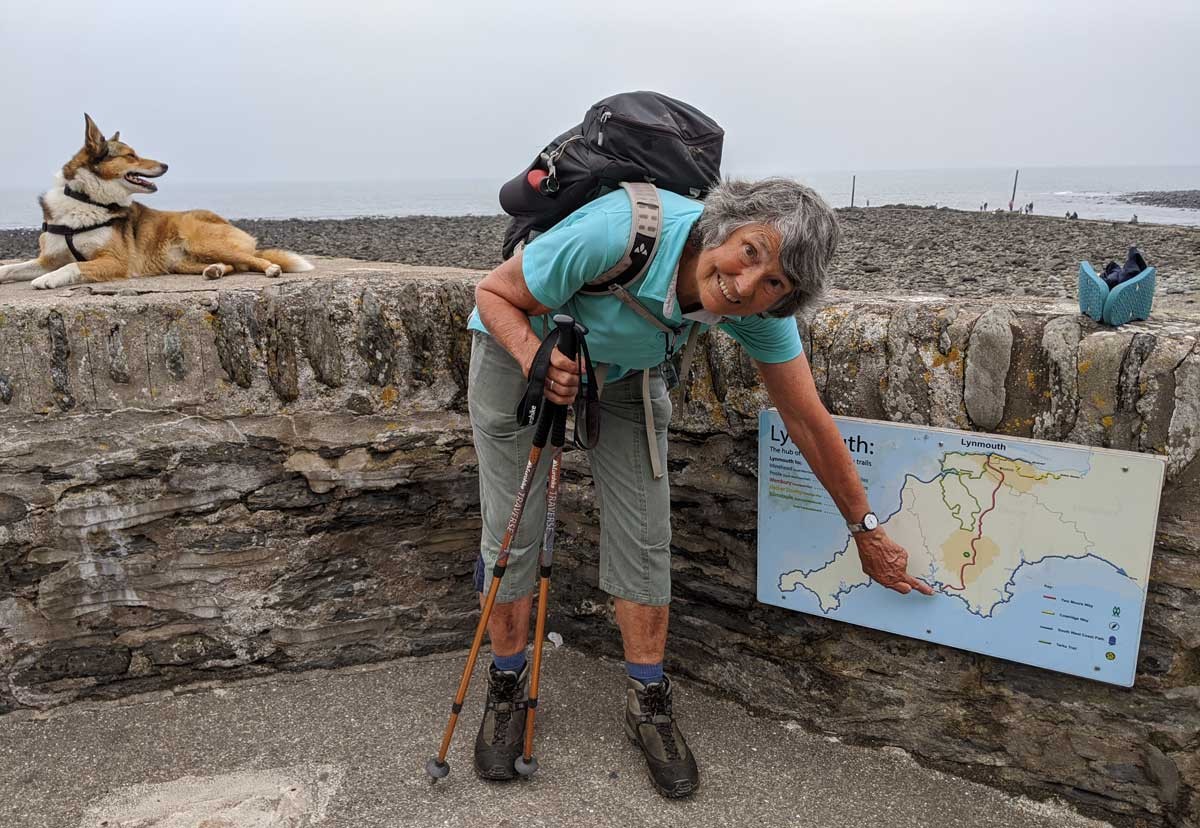
Made it! Arriving at Lynmouth
The Coleridge Way
The summer wasn’t over and, although we didn’t know it then, a second lockdown was on the horizon. Now I knew I could still walk impressive distances I didn’t want to stop. I’d long wanted to do the Coleridge Way, a modest 55 mile route from the Quantocks in Somerset to Lynmouth (again) but taking a different route through Exmoor. This was to be an autumn walk and Penny and her Labrador, Thurza, were keen to accompany me. Once again we booked two Airbnbs, and planned to shuttle the two cars between start and finish.
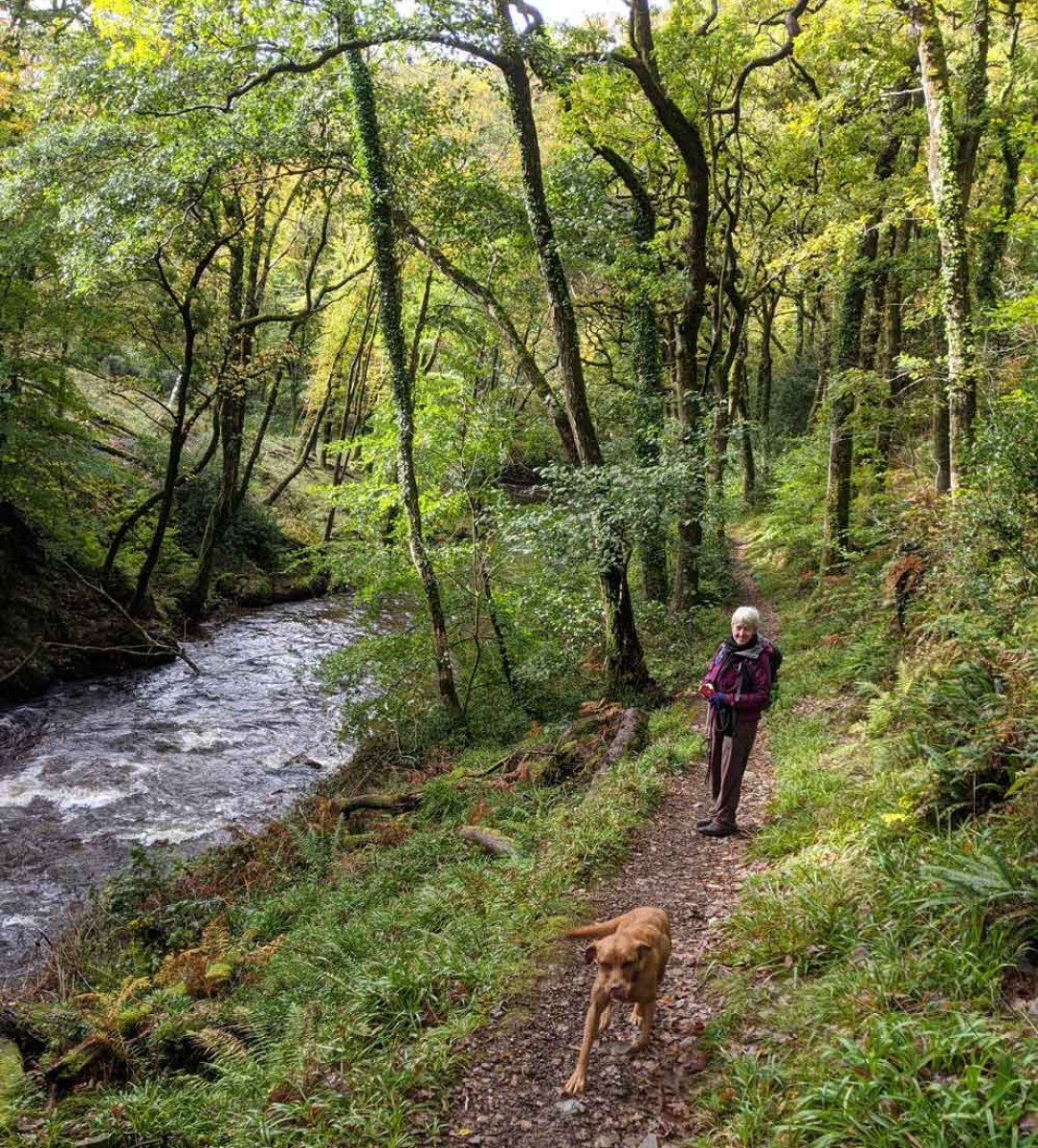
A woodland glade on the Coleridge Way
The poet Samuel Taylor Coleridge wrote The Rhyme of the Ancient Mariner, and in a nerdy period during my youth I had memorised the first 60 verses. Penny was spared most of it, though not all, during the walk, but she knew more of Kubla Khan. To our disappointment Coleridge’s Cottage at the start of the walk in Nether Stowey was closed because of Covid-19, but we had downloaded a good guide to the trail which gave us snippets about the poet’s life and association with the area. Along with his pal Wordsworth he was a great walker, the villages and countryside of Somerset and Devon providing inspiration and thinking time. As it did for us.
If the Coast to Coast path was varied, the Coleridge way surpassed expectations. It’s not well known – we met very few other walkers until we got to Exmoor – but each day’s walking took us through magnificent woods – I’ve never seen such splendid beech and oak trees – on footpaths and bridleways through parkland, along rivers, and conveniently through a village each midday so we could indulge ourselves in a pub lunch. It only rained for one day, and then it didn’t just rain, it poured. The pub was shut for refurbishment and we cut our losses and took a short cut along the lanes back to our accommodation. Definitely an advantage of self-catering.
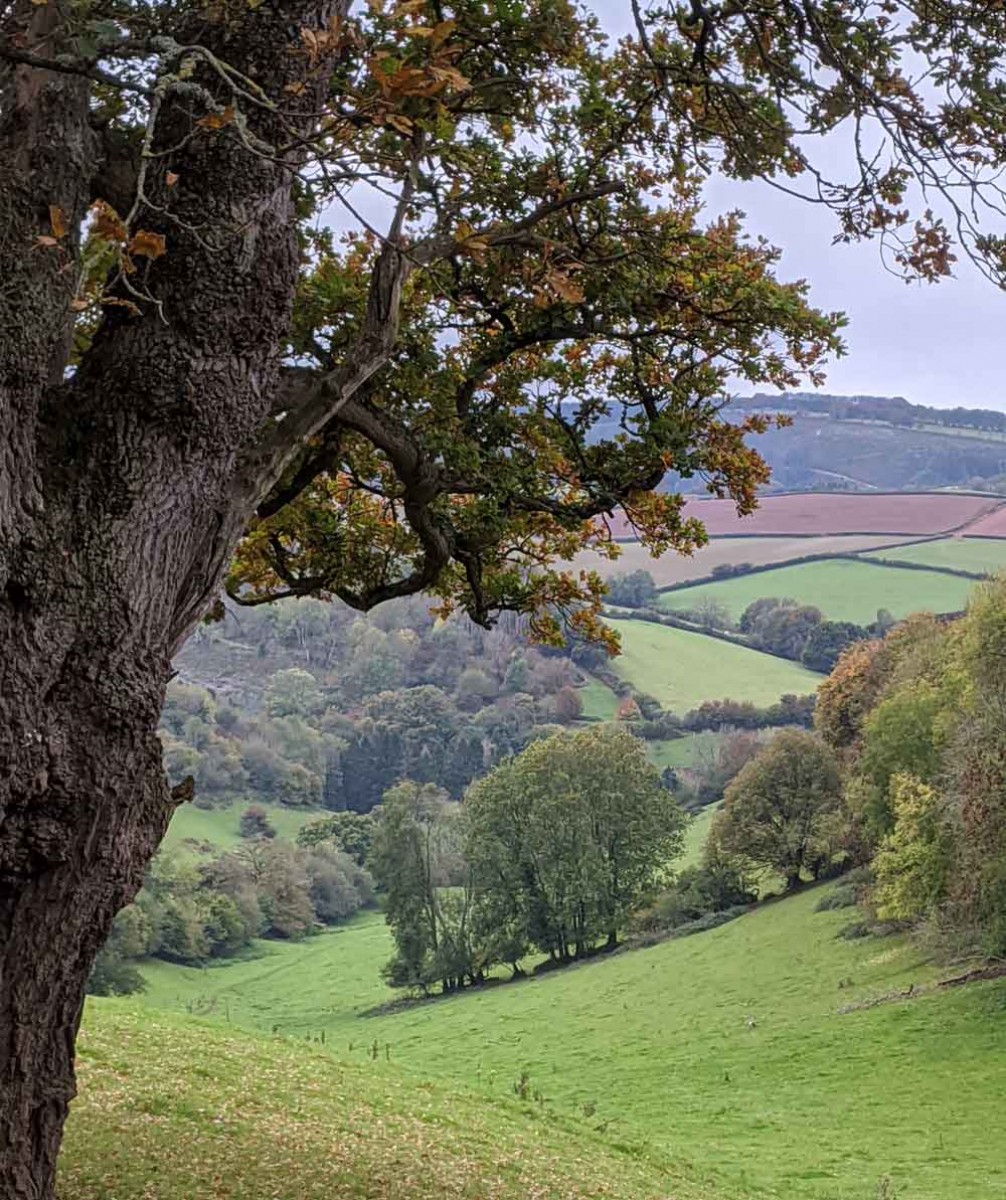
A spectacular view on the Coleridge Way
Planning a long-distance walk
There are two logistical considerations: Accommodation and luggage transfer. Youngsters on a tight budget will carry their needs with them in true backpacker style. They don’t need my advice. Other older, more comfort-loving walkers will relish the thought of a good meal and comfortable bed each night. This advice is for them.
Bed & Breakfast plus luggage transfers
How it works: Accommodation at B&Bs or small hotels is arranged beforehand, often by the luggage transfer people. A popular and experienced company which operate all over the UK is luggagetransfers.co.uk. Although having the decision on where to stay taken out of your hands saves you that endless hassle of booking each night, it does also remove choice and adds to the price. You can cut the cost even further by arranging transport for the luggage yourself. Often the B&B owner will do it for a small fee, or you can book a taxi.
The advantages are that you are walking in a true, linear route, with the surprise and pleasure of arrival at a new place each night. It is more ‘the real thing’ than circling the area in a car, and of course better for the environment. Another advantage is that the B&B owners are often delightful people who are a pleasure to talk to and a mine of local information, and their houses and views are beautiful. All in all, this is a more ‘authentic’ experience.
The disadvantage is that you are tied to a prearranged distance, however tired or even injured you are. Payment has been made for the one night in each place and you have to get there. Without your own transport you also have to eat close to the accommodation which limits the choice. And if the B&B is some way from the restaurant you have to stir your aching limbs and set forth again.
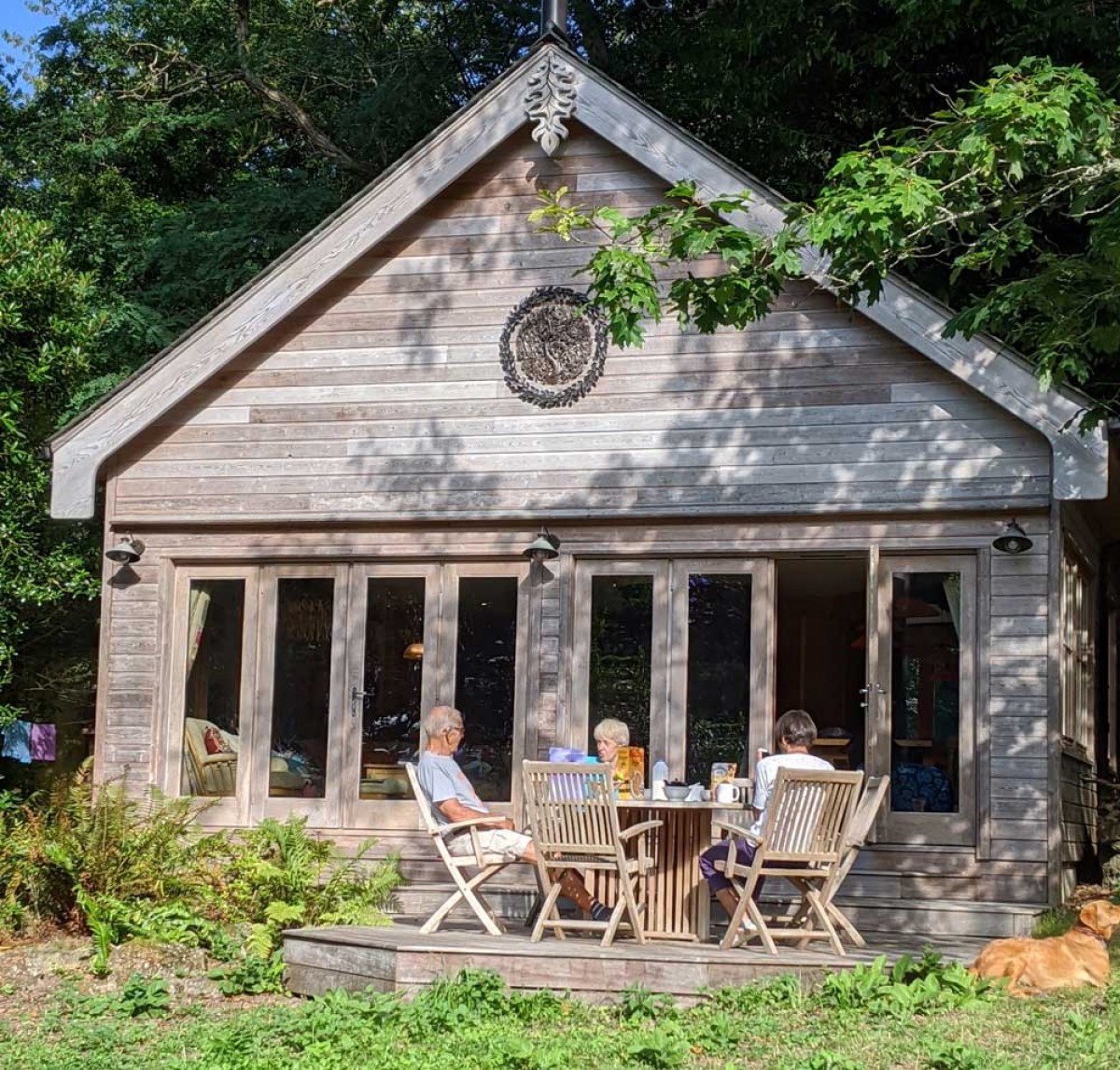
Self-catering cottage
Self catering and two cars
The advantages are obvious: you can cut the day’s journey short in bad weather or fatigue, and you can spoil yourself with a restaurant meal at a place of your choosing, or cook up a storm in the kitchen. You have a spacious area to relax in and your time is your own. Also, these places are more likely to be pet-friendly if you have a dog.
The disadvantage is that you must have two cars, one to leave at the start and one at the finish. You will start walking later because of driving in convoy first to the end of the walk and finding a parking place, then driving together to the beginning of that day’s route. Then at the end, when you’d like to just collapse, you have to reverse the process to pick up the other car.
I’ve done both. On the West Highland Way and Hadrian’s Wall I did the B&B/luggage transfer method, and self-catering on the two Devon walks. They each have their merits.
Maps and guides
Most long-distance trails have their accompanying guidebooks. In my opinion by far the best is the Trailblazer series because of the detailed, hand-drawn maps which take precedence over written description. Text is fine when you’re reading at home or in the evening but really doesn’t work well when you have to stop to read it while walking. Some people download the description onto their phone, which is easier to carry but still has to be studied. A good map is quicker to read and less ambiguous – provided that it is at a decent scale. OS 1:25,000 maps are good but you need several to cover one long route. A dedicated map with the route marked is the best, but should be backed up by an OS map because you’ll often need to know what lies beyond the line of the route – indeed this is essential if you stray off it.
Compass
I have found an actual, old-fashioned compass clipped to my daypack strap so I can access it quickly is far superior to a smart-phone compass. I used it a lot on the Coast to Coast trail, and it provided reassurance on the well-marked Coleridge Way.
Finally...
Make sure your day pack is comfortable and has a padded hip-belt to take the strain off your shoulders, and that your raingear really is waterproof. Two pairs of socks prevent blisters (thin sock liners under woollen ones). Always have a torch with you, just in case, and carry enough water. And money and the number of a taxi firm. Just in case.


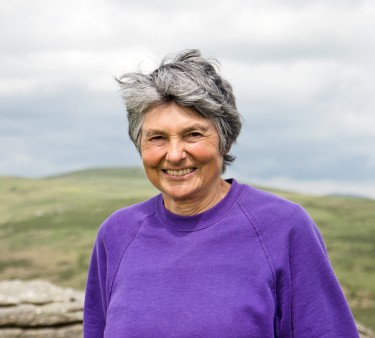
540+k followers
152+k followers